My name is Maria Grazia Di Giovannantonio. I studied architecture at the Federico II University of Naples, in Italy, and then I attended the “MI-HERITAGE” (Multimedia Interactive Heritage) master at the Iuav in Venice. Thanks to this master I have approached the issues around the digitization of cultural heritage and its digital reconstruction. Later I had a very important experience at a film production company that also works in the digital reconstruction of architectural and archaeological heritage.
How did you learn Blender?
I have been using Blender for about 3 years. I have learnt Blender at the University, via free tutorials or paid courses? I learned Blender initially out of necessity, using it at work and I deepen it daily through tutorials, practicing and experimenting and in personal projects.
What are your preferred Blender’s tools or features?
It is difficult to answer this question as I love Blender in all its functions. I find modeling with Blender really great, all the tools extremely easy to understand and use make Blender a very smart program.
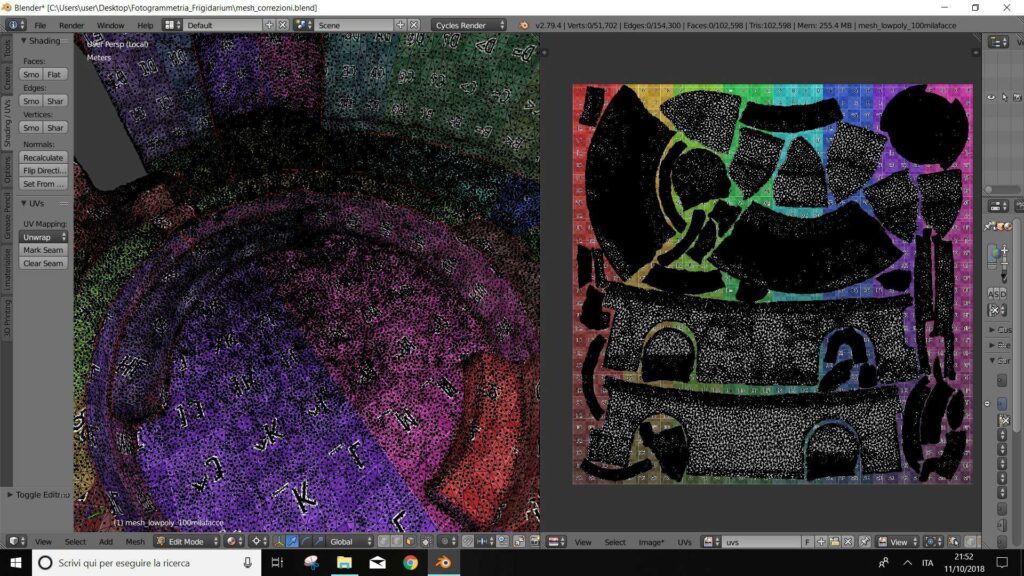
What are the strongest points of Blender for you?
The strength of Blender is certainly its versatility. I love using Blender for modeling, texturing and final rendering without using other programs and getting great results. I also find it a huge plus to have the support of a large community of people who love and use Blender around the world. In this way, any difficulty or problem is always a great help from everyone.
Do you use other software, such as Zbrush or Substance Painter, instead to have the entire workflow inside Blender?
Lately I’ve been trying to do the entire workflow in Blender, except for using Photoshop with which I do post production. Sometimes I also use Substance Painter for creating Textures.
How much do you use Blender for your work?
Every day I use Blender for my work which consists mainly in modeling and also in workflows aimed at digital reconstructions of the architectural heritage.
Are you freelance or do you work for a company?
I have been working for two years in Digital Lighthouse, an Entertainment & Media House specialized in innovative technical and artistic solutions designed for the Cultural and Creative Industry.
What is the most interesting jobs that you have worked at recently?
The work I am talking about is a research project developed as a thesis of the “MI-HERITAGE” master. The object of study examined is the male Frigidarium of the Stabian Baths of Pompeii (Italy). Starting from the photogrammetric reconstruction of the archaeological site, this project aims at the digital reconstruction of the original frescoes based on a study of archival documents and the testimonies of the artists of the past who have chosen to immortalize the beauty of this place, before was marred by time and events. The goal is to recreate the original appearance of the pictorial cycle, almost completely absent and severely deteriorated so as to make it difficult to read. Starting from the existing ones, from bibliographic references, from iconographic comparisons and from in-depth studies, an attempt was made to integrate the missing parts of the paintings with the aid of computer graphics.
The reconstruction of the model in its current state was possible thanks to the aid of photogrammetry. The process for creating the final model is long and complex because it involves long intermediate stages of processing, cleaning, decimation and optimization of the mesh. This process saw the use of different software, each of which had a specific task for the return of the digital model. It is essential to remove from the model all points and parts not contextual to the object concerned and the noise generated during the process. There are several operations that allow this. These are filtering operations that eliminate triangulation errors, allow the filling of holes, the correction of the orientation of the normals and the decimation of the mesh; all aimed at making the model lighter and allowing its export and use more agile, compatibly with the need to preserve and guarantee a very high resolution of the texture. The use of Blender was fundamental right from the start. First of all, it was indispensable for the processing of UVs aimed at creating the textures generated by photogrammetry. Subsequently, on the basis of the iconographic and bibliographic references, I reconstructed the lost frescoes through a digital coloring and painting work in Blender using stencils and stamps.
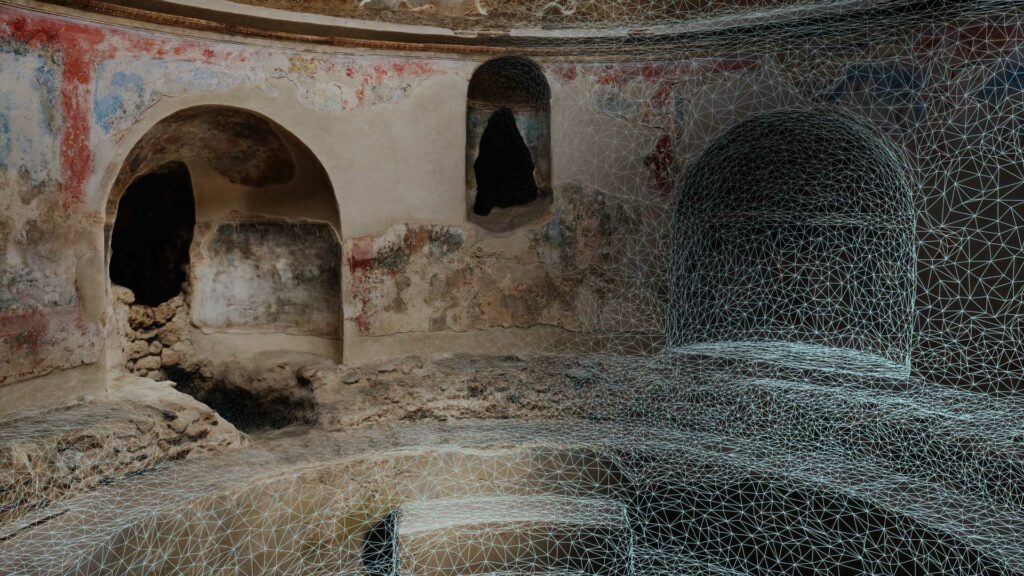
Do you have any Blender artist who inspires you?
Not really. There are a lot of good artists and good works, but in particular I want to thank an artist who has passed on many teachings to me, his name is Riccardo Bancone.
I hope to continue learning and improving and become a great 3D artist.
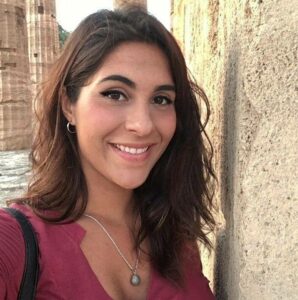
Links to Maria Grazia
- linkedin: @maria-grazia-di-giovannantonio
- Artstation: artstation.com/mgdg
- instagram: @_mg.3d
Digital elaboration of the photogrammetric model of the Frigidarium with Agisoft PhotoScan®
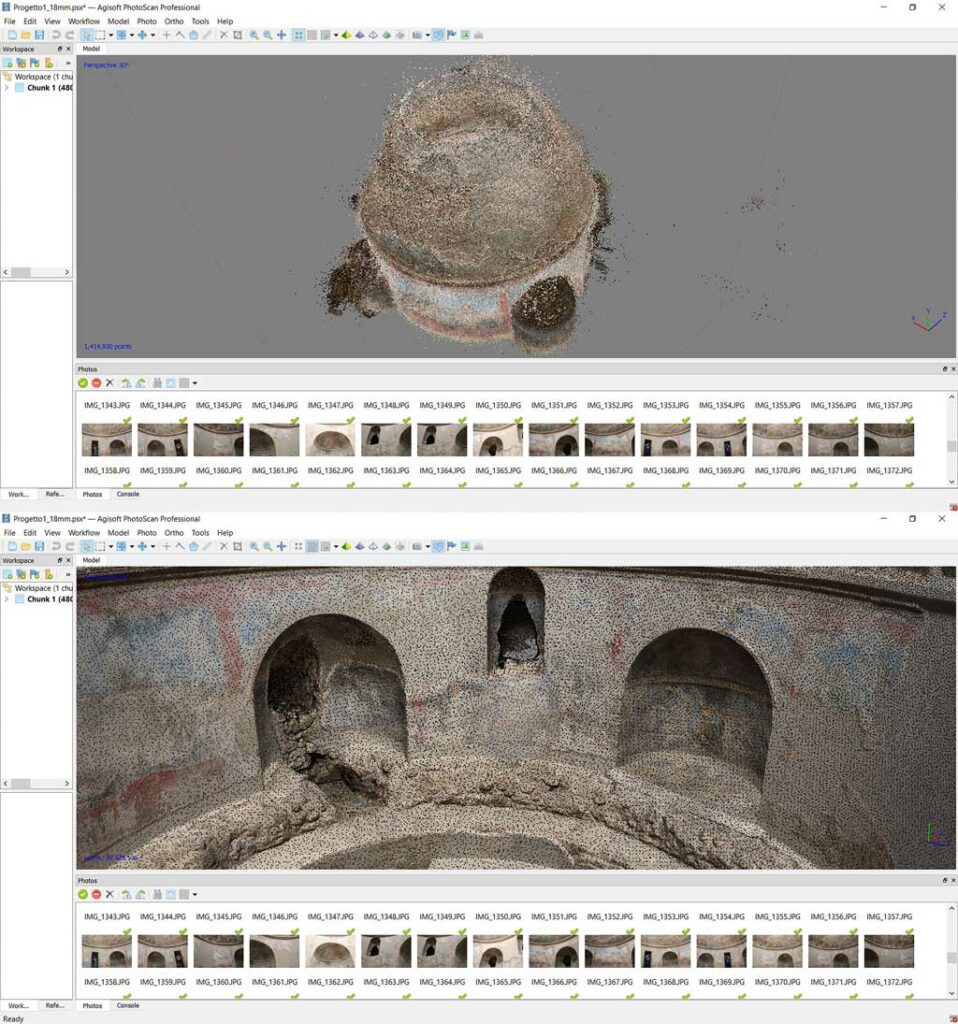
Workflow UV process in Blender
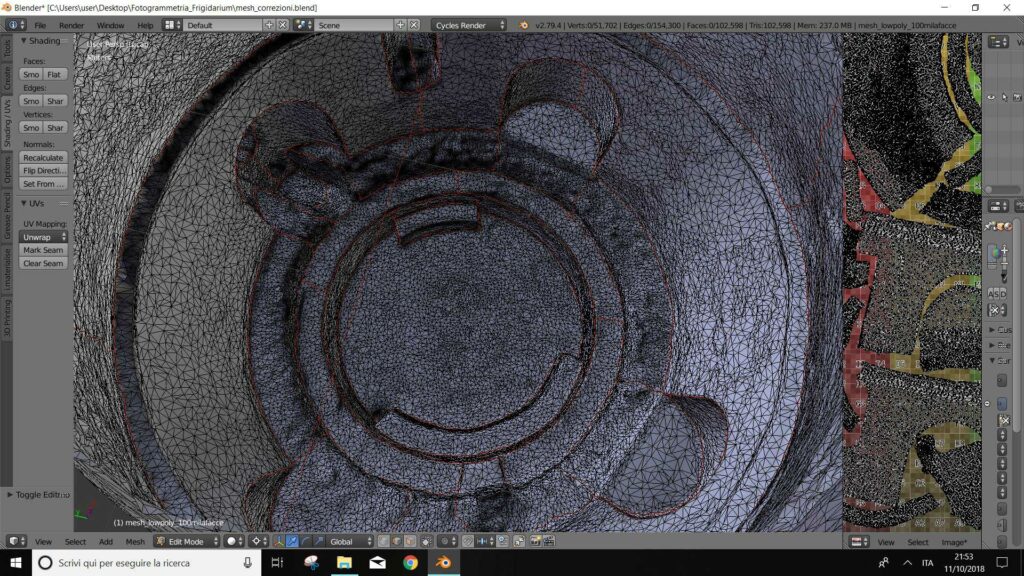

Digital restitution of the photogrammetric model of the Frigidarium
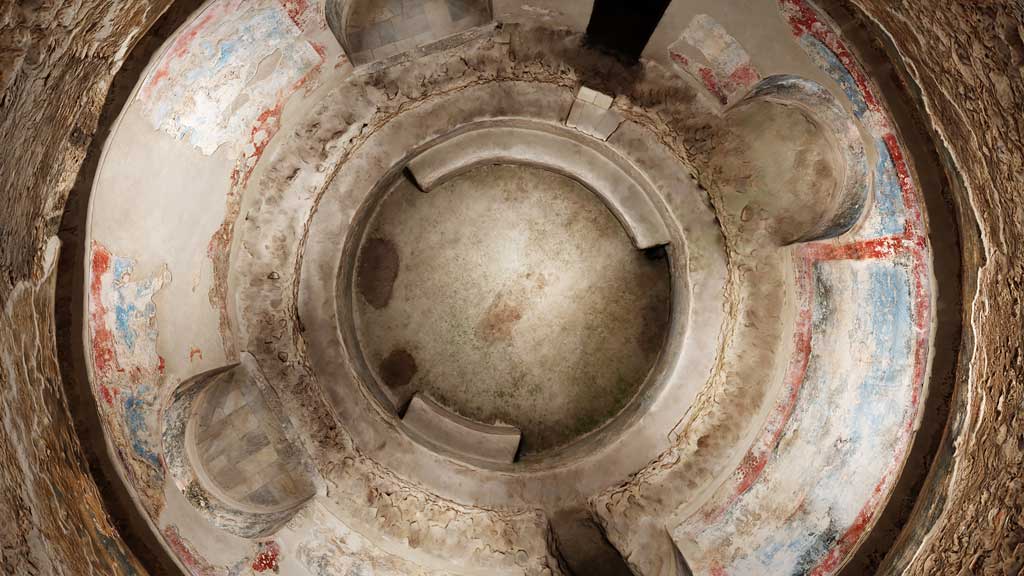
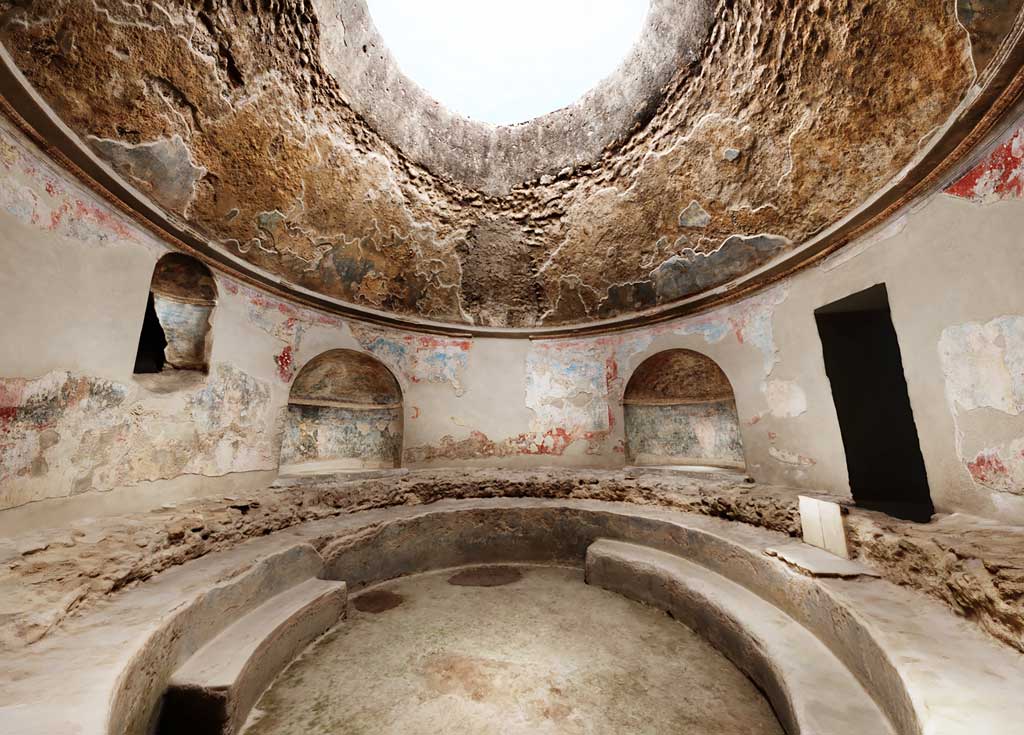
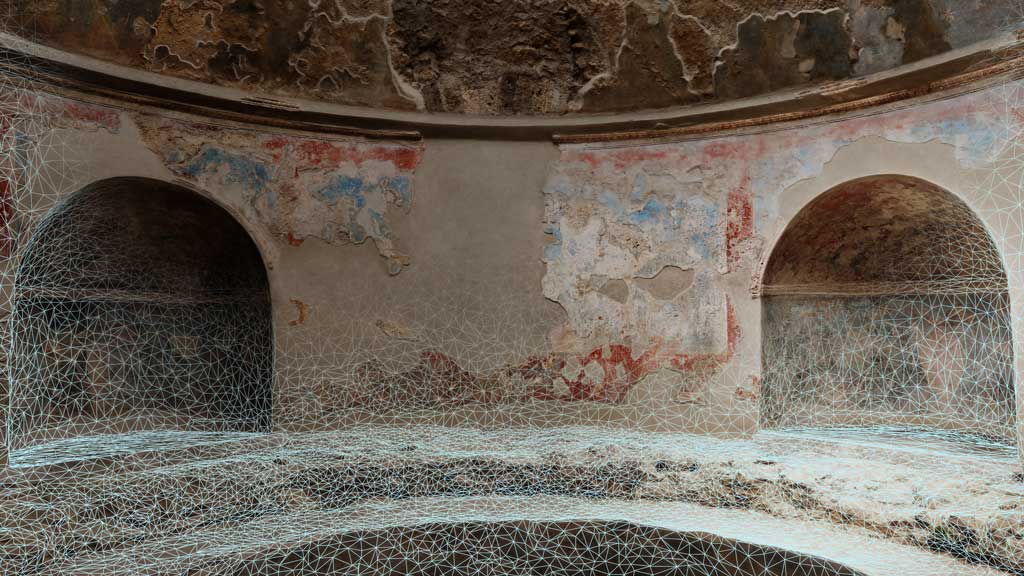
Hypothesis of digital reconstruction of the Frigidarium frescoes
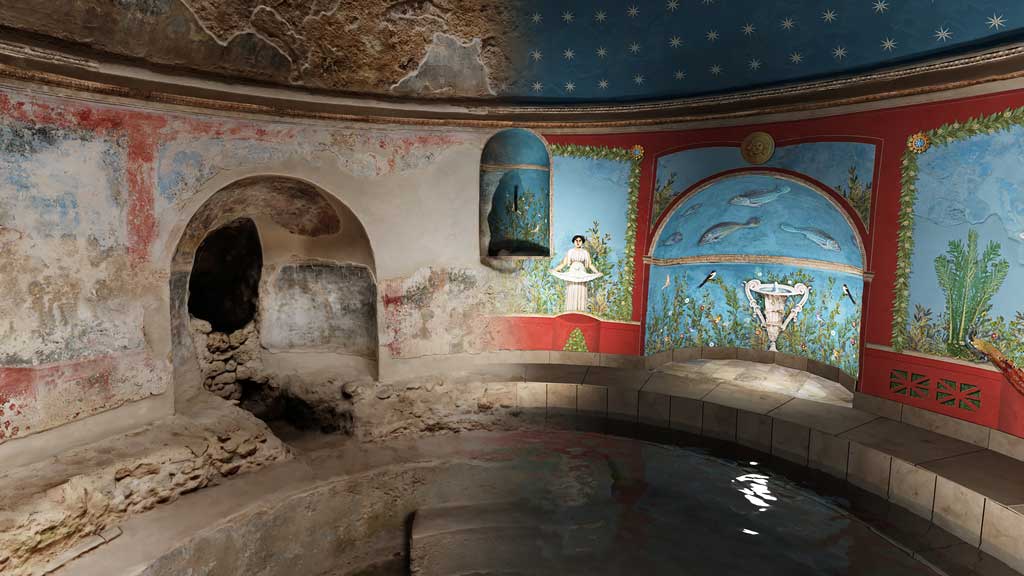
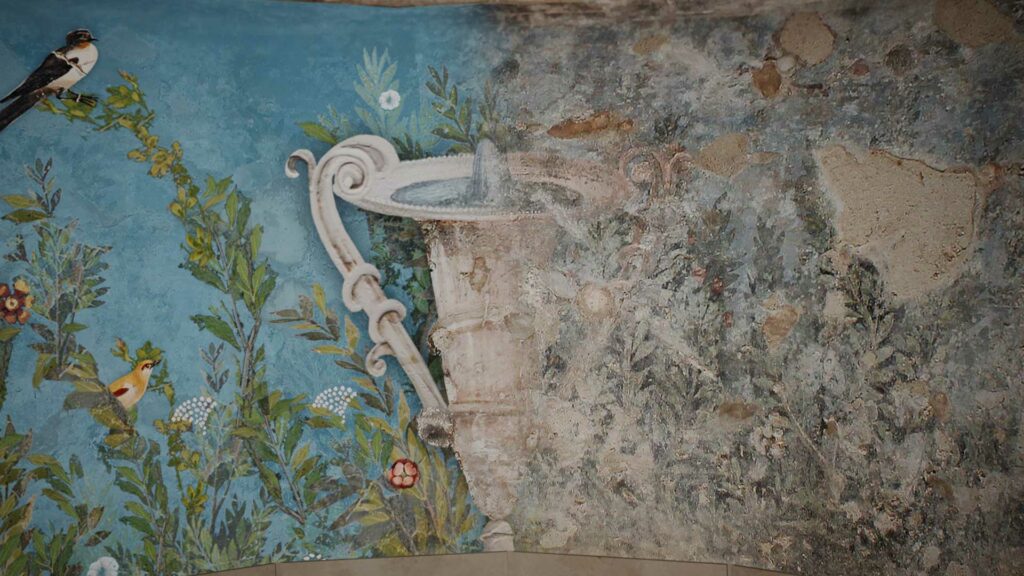
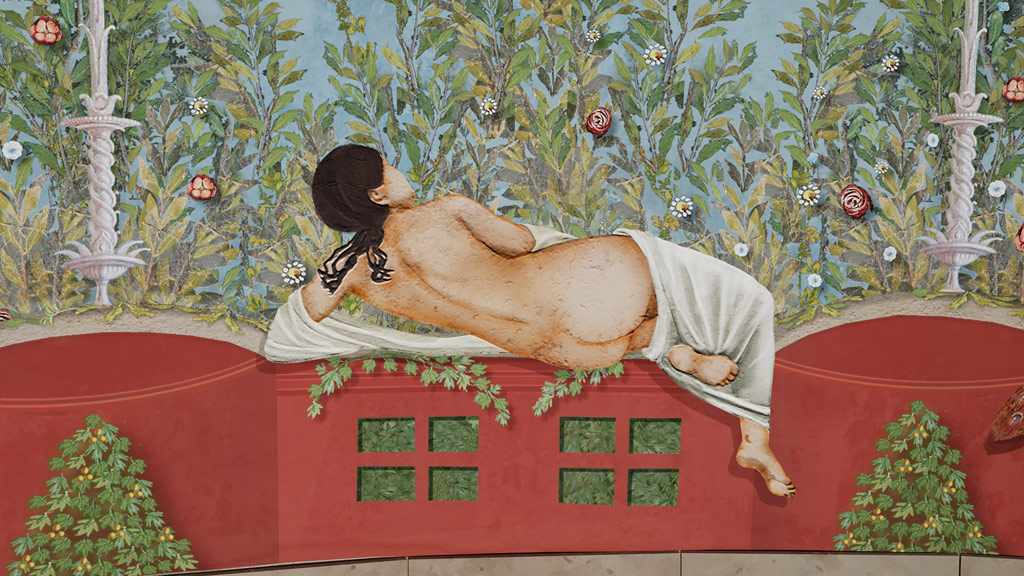
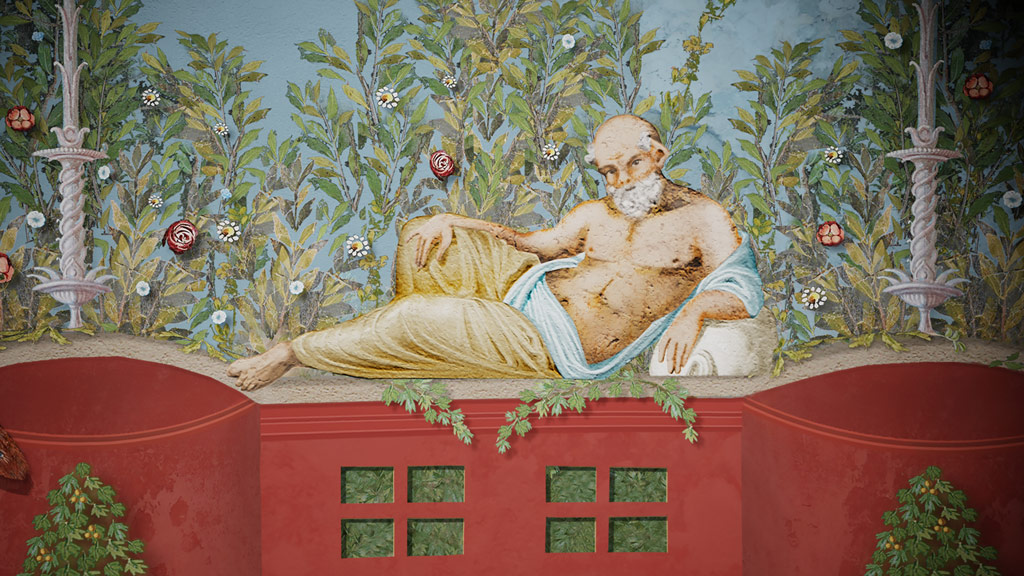

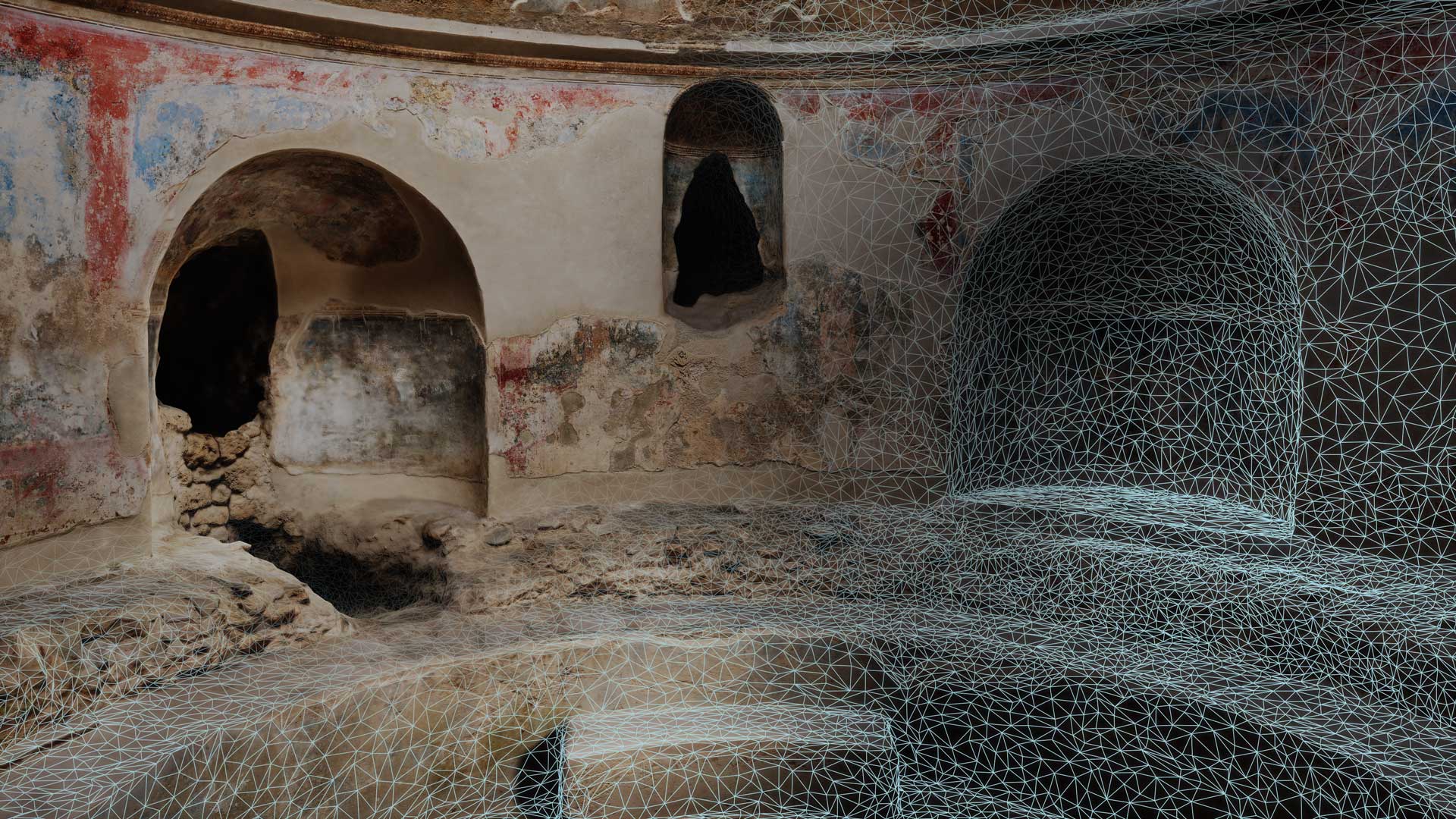
Why not elaborate on the uv workflow? Or the cleaning of photogrammetry models? Is that just because she used PhotoScan and not blender?
Cleaning the photogrammetric model is not a short process and there are several steps before arriving at the final result. These are very technical phases that also involved the use of other programs such as Meshlab but much of the cleaning was done in Blender. It was a manual cleaning aimed at eliminating the imperfections of the photogrammetric mesh. Instead, the UV processing was done in Blender. In this way I was able to reproject the texture with Photoscan using, however, the UVs made in Blender. I hope I have answered.